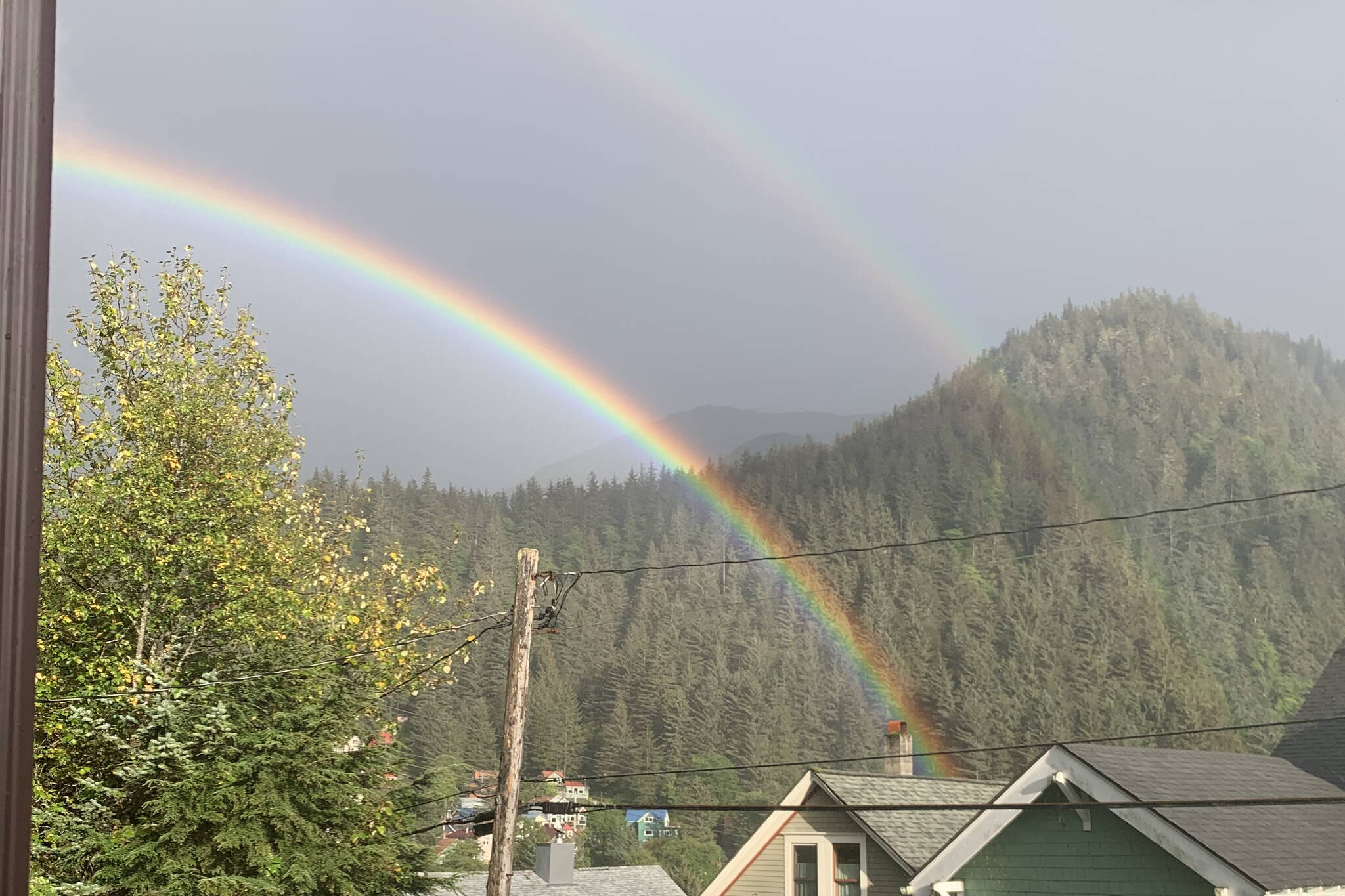Over the course of the past year, during which I have served as the student rabbi of Juneau’s Jewish community, I have grown accustomed to Juneau’s rainy weather. I have even added the phrase, “There is no bad weather, only bad gear,” to my vernacular — only to be met with eye rolls from family and friends in the Lower 48.
That said, the rainstorm that greeted me last week as I arrived in Juneau, eager to commemorate the Days of Awe (the ten most sacred days on the Jewish calendar) with the Juneau Jewish community, was quite intense. When it finally cleared up last Friday afternoon, I felt grateful and ready for a pre-Rosh Hashanah walk. As I laced up my shoes and took off on my stroll, I noticed a flash of color in the sky. Rubbing my eyes to ensure I wasn’t imagining things, I took a closer look, and there it was, the most incredible double rainbow.
“What an auspicious start to the new year,” I thought to myself.
The double rainbow reminds me of a central theme during this season of reflection and renewal: the potential for creation amidst chaos.
On Rosh Hashanah, it is customary to read a piyyut, a liturgical poem, each time the shofar is sounded. “Hayom Harat Olam,” we exclaim after each set of blasts. Today the world was born.
The scene that the Torah paints of the world coming into being is nothing short of chaos. “When God began to create Heaven and Earth, the Earth was tohu v’vohu, with darkness over the surface of the deep and a wind from God sweeping over the water,” the book of Genesis opens.
While there is no direct translation of the phrase, tohu v’vohu is generally thought to refer to something that is “formless and void.”
However, 15th rabbi, Sforno, teaches that “formless and void” does not quite capture the complete essence of the phrase. Tohu v’vohu, according to Sforno, refers to the raw and chaotic materials that “had potential” to become real. These materials were constantly shifting and changing — and then, amidst all of this chaos, the Divine began to create the world.
In her 2003 book, Face of the Deep: A Theology of Becoming, contemporary theologian, Catherine Keller, offers yet another interpretation of this intriguing phrase. Tohu v’vohu refers to the “turbulent uncertainties within which (each) one of us is moving and changing (all) the time,” Keller writes.
Whatever the tohu v’vohu was intended to mean in the Bible, it contains an incredible lesson. God did not see this void, unformed chaos and turn away, discouraged by the task at hand. Instead, God saw potential and said “Let this formlessness and emptiness be not the ending, but a beginning. Let this darkness be the birthplace of light.”
Each Rosh Hashanah has the potential to be the birthplace of light. Whether you are Jewish and use this time of the year for self-reflection and making amends or practice another faith (or no faith!), this time of year is replete with themes of renewal and new beginnings. From back-to-school to getting into a post-summer routine again, there is so much possibility this time of year.
And yet, if you are anything like me, it is tempting to want to wait for the perfect moment, the perfect conditions to begin this work of creation. Getting into a journaling practice sounds nice…at the end of the semester. Cultivating a better work/life balance is a goal of mine…when this one big project is done.
What if we ignored the impulse to wait for perfection, and conversely, were able to begin because of the chaos around us?
Why is creation amidst chaos possible? Because when there is chaos, we find ourselves with the ability to see things in a new light. To re-evaluate. To re-imagine the way things could be.
It is natural to seek order. It is human to want stability and it is valid to desire control. And. My hope for myself, my prayer for each of us during this season of renewal, is that we are able to embrace the tohu v’vohu — the swirling chaos, the turbulent storm — and dare to create and begin anew.
• Ally Karpel (she/her) is the student rabbi of Congregation Sukkat Shalom in Juneau. “Living & Growing” is a weekly column written by different authors and submitted by local clergy and spiritual leaders. It appears every Saturday on the Juneau Empire’s Faith page.

